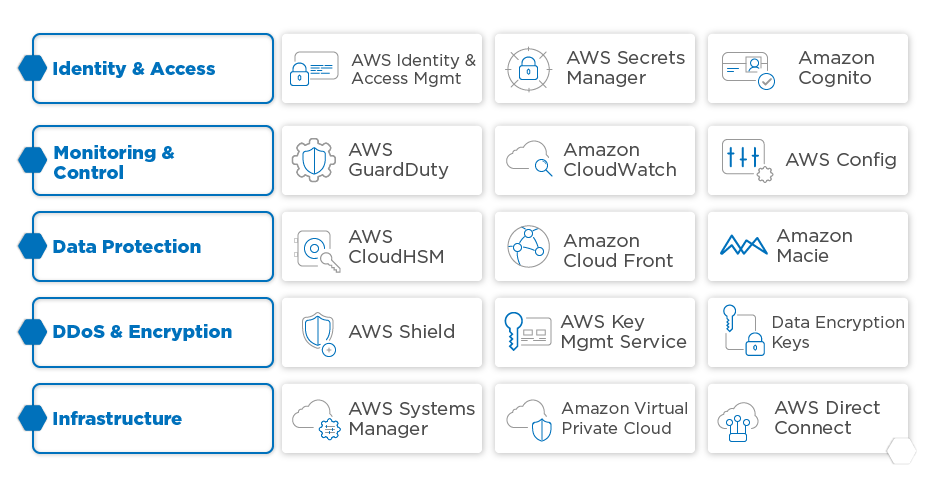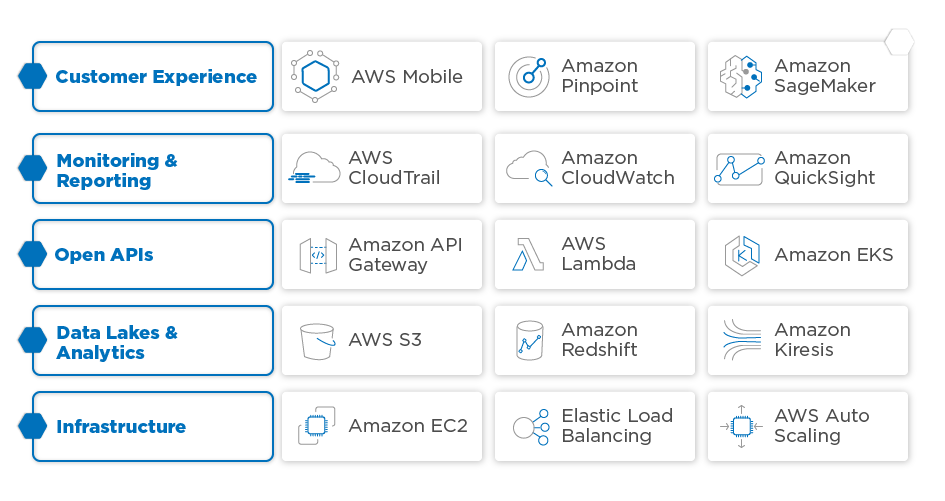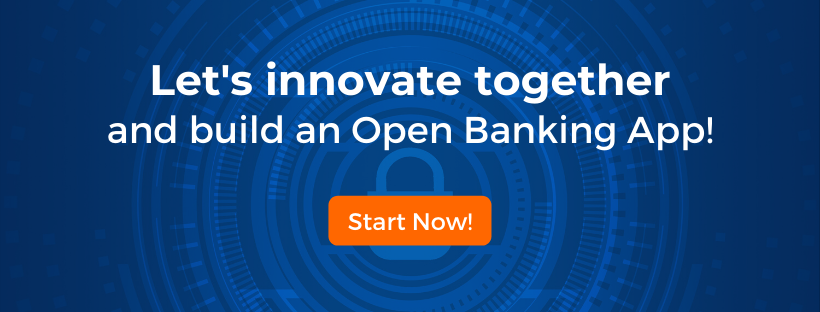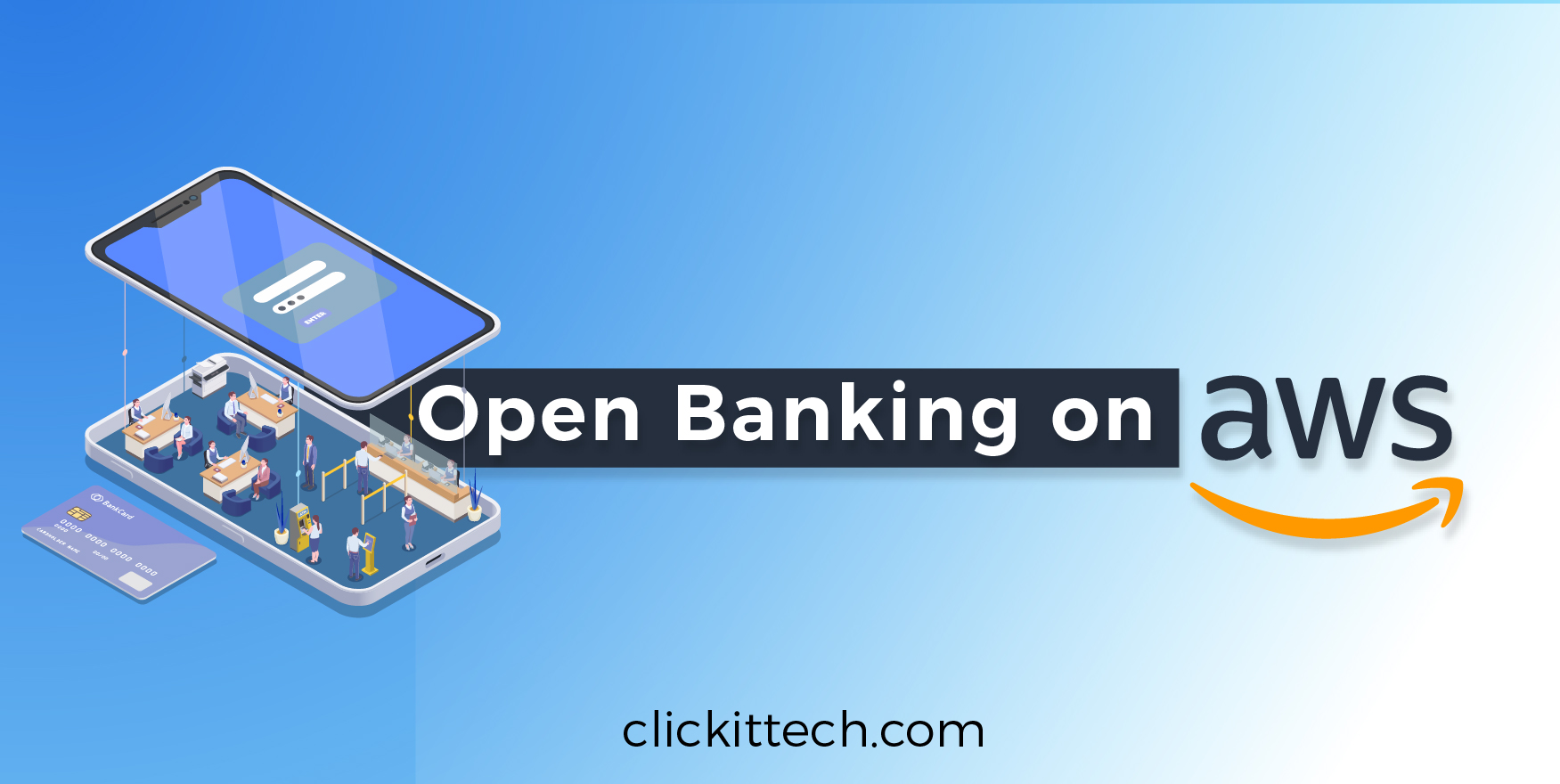The financial world is embracing Open Banking AWS at a rapid pace due to technological advancements. The barriers between industries are fading out and ensuring the opening of new business opportunities… wait, what? Well, to talk about how AWS Open Banking is hitting businesses nowadays, we got to understand its immersion on the Open Banking Cloud transformation.
A non-stop process in which startups and enterprises are continuously growing on the cloud. Open Banking AWS is a new way to share financial information electronically and securely.
Table of contents
- Open Banking
- Open APIs
- Open Banking experience
- Biggest benefits of Open Banking
- How secure is Open Banking?
- AWS Services to provide security
- Open Banking AWS
- Why build Open Banking in the Cloud?
- AWS Services to build open APIs
- Frequently Asked Questions
- Conclusion
Open Banking
Open Banking refers to the act of institutions sharing information with third-accredited-parties, and it has been boosting the development of new products at the time of increasing competition and collaboration between different institutions. This new open-way allows users to own and share their data with whoever and whenever they decide since Open Banking gives access to providers and institutions to personal financial information.
Open Banking represents an ever-changing environment that has transformed the way customers, banks, and enterprises get related to the financial ecosystem. Open Banking is the new financial-digital model that will bolster data sharing via Application Programming Interfaces (APIs). This throughout the help of experienced developers.
APIs have been using as a way to communicate and exchange functions among different softwares and servers. I’ll like to point out that an adequate open banking strategy can end up on exceptional business standards for the participants involved in the financial technology system.
You can also read this blog on Medium
Open APIs
APIs equals the term Application Programming Interfaces. An API is a means to connect two pieces of software to exchange data or messages in a standard format. An Open API is a set of public services that allow institutions to retrieve data based on specific restrictions and security regulations. Open Banking AWS needs APIs, and APIs need developers to build the necessary applications and interfaces with its particular regulations and data protection.
APIs allow a standardized interaction between participants while promoting and enabling innovations in the financial business model. Towards these open APIs, developers are now able to create new programs and apps with the information provided by banks so users and institutions can benefit from it. Open Banking with APIs leverages data held by financial service providers, as well as the opportunity of building new innovative products.
Open Banking Experience
Open Banking AWS makes financial information available to developers; thus, it represents a push for banks to open their APIs. But, what does this openness represent to your business? First of all, data sharing and open banking include an improvement in customer experience. Commercial banking, or typical banking, as we all know, has always been available to customers on the parts of loans, credits, deposits and withdraws.
However, open banking has revolutionized the customer experience and taken it a step forward, where the customer is the sole focus of attention. The customer has been placed in the center of the operation with complete control of their finances. And with the personal ability to interact with their money, accounts, and investment. In lockstep, open banking enables a public banking system within a crypto world that is fully compatible.
Biggest Benefits of Open Banking
- Enables to work with online or mobile banking.
- Provides transparency on consumer’s finances.
- Enables direct payments and transactions.
- Transform a comparison of financial services.
- Increase innovation and competition in financial products.
- Create opportunities for all the players.
Open Banking aims to increase innovation and competition in financial products. It is expected that Fintechs can use banking data to create new financial products. Thus developers can work with a fully secure, competitively priced, and better-suited platform to customer’s needs. Open Banking stands to foster innovation between banks and Fintechs, as well as benefit end-users.
So far, Open Banking offers new revenue streams in the form of license and usage fees. Global banks will face particular challenges regarding regulations concerning this open system. Change is difficult and rarely comfortable, but this open system requires the collaboration between Banks and Fintech providers to grow the revenue of both parts.

Open banking creates opportunities beyond streamlining financial operations; it provides the possibility of understanding how, why, what, and where consumers financially act. Open Banking represents in parallel, benefits to all size businesses and banks since it stimulates new opportunities for funding and capital.
Fintechs and innovators can not be left behind when talking about an open financial system, and this is because Open Banking creates opportunities for all the players, not only customers and Banks but also to Fintechs. Having a robust Fintech application improves the chance for consumers to make decisions and to increase transparency.
How Secure is Open Banking?
Open banking is looking to empowering customer choice by ensuring its data protection and by enabling industry innovation. An appropriate Open Banking model requires a regulatory framework and standardization. Fintechs should be regulated proportionally as the manner they pose consumers, that is why Financial Businesses can not enter into the market without appropriate oversight.
Due to security reasons and data privacy, Open Banking proposes to avoid the use of screen scraping and access data through interfaces, such as open APIs. The Treasury Department recommends regulators to remove the legal and regulatory uncertainties, and propose to migrate from screen-scraping to open APIs. So, Open Banking is a secure financial model, when following the appropriate regulations. Simple steps to be followed are ensuring that the consumers are the owners of their data, mandating clear consent agreements, the ability to revoke, and ensuring security standards.

The United States currently lacks an Open Banking law. However, the USA market has pushed to outline initial recommendations and online regulations for an open system to have protected user information and secure financial data. The British experience, on the other hand, has shown the benefits of an open financial system for consumers and small businesses while promoting their financial information. Open Banking involves opening up banking systems, particularly customer data to third parties so that they can provide services directly to customers.
A well-regulated open system will provide the necessary tools to help consumers understand their financial habits, as well as the full range of available services they can benefit from. When executed properly, open banking mitigates the risks and ensures to protect the consumer with the proper regulations and security standards.
Read our blog AWS Security Practices for Financial Services
AWS Services to provide security
All digital customers can benefit from the AWS Cloud since, in the same way of building, AWS also provides some services in order to keep applications and infrastructures secure at all times. Furthermore, Amazon has a set of AWS Compliance Programs in order to certificate its commitment to users’ data protection, assessed by third-party independent auditors.
These are some of the top AWS services to provide security:
Identify & Access: AWS Identity & Access Mgmt, AWS Secrets Manager, Amazon Cognito.
Monitoring & Control: Amazon GuardDuty, Amazon CloudWatch, AWS Config.
Data Protection: AWS CloudHSM, Amazon CloudFront, Amazon Macie.
DDoS & Encryption: AWS Shield, AWS Key Mgmt Service, Data Encryption Keys.
Infrastructure: AWS Systems Manager, Amazon Virtual Private Cloud, AWS Direct connect.

Open Banking AWS
As a partner of Amazon Web Services (AWS), ClickIT is pleased to offer an agile journey to the cloud using the Open API Framework, which has been built based on the AWS partnership with ClickIT expertise in banking and cloud technology.
Open Banking, hand-to-hand with AWS services, results in a few weeks of a delivery project rather than in months, and while implementing the best security and data standards.
Here are the Top 10 AWS Services you should know about!
Why build Open Banking in the Cloud?
AWS owns a unique space for financial institutions which provides them the opportunity of accomplishing regulatory requirements while creating strategic value and building a secure, scalable and innovative Open Banking platform. I have made a list of what I think are the most important benefits that have AWS to help improve the Open Banking cloud practices. So, How does AWS improve Open Banking?
- Allow building unified APIs on multiple microservices, which will draw on to increase agility and release velocity.
- Enable scaling APIs based on demand, in this way businesses, will only pay for what they truly need, and anything else, so at the same time help to decrease cloud costs.
- Address developers to innovate faster, with the opportunity of creating secure and functional interfaces.
- Implement high levels of security standard, by following the best practices and data regulations.
- Provide the opportunity of creating authentication and authorization requests.
- Enable throttling and protection against DDoS attacks, so sensitive data don’t suffer from embezzlement.
AWS Services to build open APIs
Amazon Web Services provides the opportunity of sharing data in the most secure way, at the time of offering a variety of technologies that Banks and Fintechs required in order to build open APIs for Open Banking. Some of these technologies are:
Customer Experience: AWS Mobile, Amazon Pinpoint, Amazon Sagemaker.
Monitoring & Reporting: AWS CloudTrail, Amazon CloudWatch, Amazon QuickSight.
Open APIs: Amazon API Gateway, AWS Lambda, Amazon EKS.
Data Lakes & Analytics: Amazon S3, Amazon Redshift, Amazon Kinesis.
Infrastructure: Amazon EC2, Elastic Load Balancing, AWS AutoScaling.

Frequently Asked Questions
Open Banking AWS is a new way to share financial information electronically and securely. It refers to the act of institutions sharing information with third-accredited-parties
An Open API is a set of public services that allow institutions to retrieve data based on specific restrictions and security regulations.
1) Enables to work with online or mobile banking.
2) Provides transparency on consumer’s finances.
3) Enables direct payments and transactions.
4) Transform a comparison of financial services.
5) Increase innovation and competition in financial products.
6) Create opportunities for all the players.
Open banking is looking to empowering customer choice by ensuring its data protection and by enabling industry innovation. An appropriate Open Banking model requires a regulatory framework and standardization.
Conclusion
Building an Open Banking Platform is a matter of time and experts working altogether, in order to deliver a secure Application conform by open APIs. Once you had assessed yourself on the topic, it is time for next steps: 1) Contact a Software Development company that can help you build and secure your Open Banking platform, 2) Define your strategy to build a modern API environment in the cloud, and 3) Implement the best AWS practices in the cloud in order to keep your Open Banking Platform secure on AWS. It is time to Build an Open Banking Platform!










